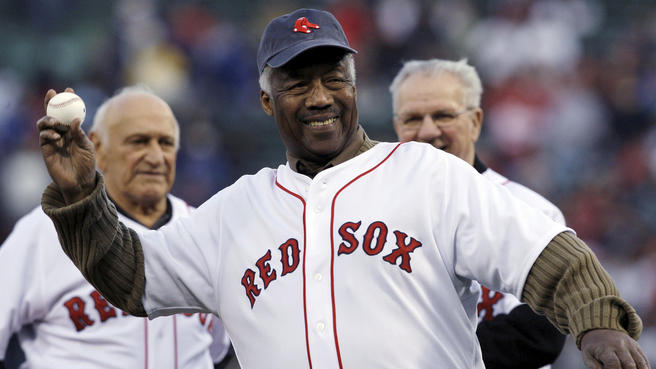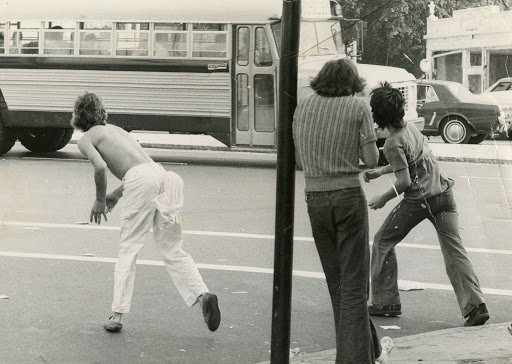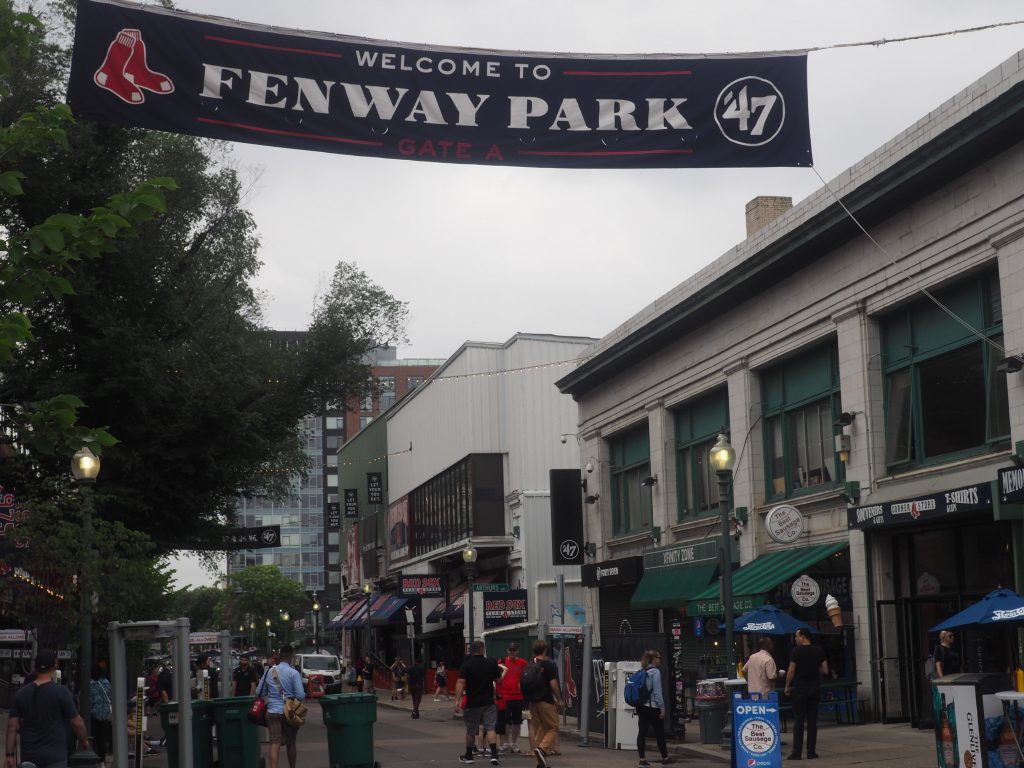Boston — Fenway Park is the home of the Boston Red Sox. People come from everywhere to catch a game, take a tour and snap photos of its left field wall, “The Green Monster.” The 108 year old park is baseball’s oldest and most storied.

https://www.mlb.com/redsox/ballpark/tours

The Red Sox have been dominant winning four world championships in 16 years. The last coming in 2018 with a near sweep of the Los Angeles Dodgers, but from 1918 to 2004, the Red Sox did not win a World Series. Most infamous was 1986. Leading the New York Mets in the series three games to two. The Red Sox held a 5-3 run lead in game six. Met’s outfielder Mookie Wilson hit a ground ball that rolled through the legs of first baseman Bill Buckner to tie the game. The Mets went on to win and then came from behind in game seven to win the series.
Many blamed the Red Sox 86 year drought on, “The Curse of the Bambino.” In 1919, Boston sold its best player, Babe Ruth to the New York Yankees. Ruth went on to hit 714 home runs and won multiple championships in his career with the Yankees. According to lore, Ruth was angry at the Red Sox for selling him to New York and placed a curse on them. Yankee fans often taunted Red Sox players at games and carried signs reading, “Curse of the Bambino.”
Books have been written, musicals staged and movies made over the years about the curse. In director Ken Burn’s 1994 documentary, “Baseball,” former Red Sox pitcher Bill Lee suggested that the Red Sox should exhume the body of Ruth, transport it back to Boston and publicly apologize for selling him to the Yankees.
Red Sox fans tried many things to break the curse. Professional exorcists were hired to remove the alleged hex. In 1999 Ruth’s daughter was invited to throw out the first pitch in a playoff game. In 2001 after receiving advice from a Buddhist monk, a fan placed a Red Sox cap at the top of Mt. Everest and burned a Yankee’s cap at its base camp. In 2002, some fans visited a farm in Sudbury, Massachusetts formerly owned by Ruth. They were in search of a piano Ruth had pushed into a pond. The fans believed that if the piano were found and restored, the curse would be broken. Did Ruth really place a curse on the Red Sox or could it have been Karma?
“What one puts out into the universe will come back to them,” The Laws of Karma.
In 1947 Jackie Robinson joined the Brooklyn Dodgers, becoming the first African American to play with a major league team. Robinson’s success with the Dodgers prompted other teams to sign black players, but the Red Sox held out. Their owner Thomas Yawkey was a known racist who resisted integration. The Red Sox did not have an African American player on its roster until 1959, twelve years after Robinson had signed with the Dodgers and three years after he had retired. After being pressured by the Boston NAACP and The Massachusetts Commission Against Discrimination , Red Sox ownership finally gave in signing an infielder from the Bay Area, named Elijah “Pumpsie” Green.

The Red Sox brought Green up from the minor leagues for spring training in 1959, but did little to alleviate the humiliation Green received during pre-season games in the South and Southwest. Unlike other teams, they did not insist that he be allowed to stay in the same hotels as his white teammates. Green was forced to get his own lodging, often miles away. In 2018 interview with The San Francisco Chronicle, he recalled how he wasn’t allowed to stay or eat with his white teammates. “It practically overshadowed a lot of things I might have enjoyed more, ” he explained.
Even after an outstanding spring training, Green was denied an opening day roster spot with the team and was returned to the minor leagues. “It was the best spring I had in my life. The best ball I’ve ever played in my life. I was a shoo in . . . I didn’t know I was that good, ” he proclaimed. But Green got word he was being sent down from then Red Sox manager Mike Higgins. A few years earlier Higgins had told a sports reporter, “There will be no niggers on this club as long as I have anything to say about it.”
In early July of 1959 Higgins was fired and Green was finally called up from the minors to the Red Sox. After a 13 game road trip, he made his debut at Fenway Park on August 4th. Green was given a standing ovation by both black and white fans as he trotted out to second base. In his first at bat, he hit a line drive off the Green Monster for a triple. He received another standing ovation from fans. “I thought the stands were gonna break down,” he recalled. He then scored on a ground ball and the Red Sox beat Kansas City 4-1. Green called that first Fenway hit his greatest baseball memory.
Green played four years with the Red Sox mostly as a reserve infielder and finished his career with the Mets. After retiring from baseball he went on to teach and coach at Berkeley High School. In 2009, 50 years after breaking the team’s color barrier, Green was honored by the Red Sox in a first pitch ceremony. He died in 2019, but will always be remembered as the player who finished what Jackie Robinson had started.

Was it a curse or was it karma? The last team in major league baseball to integrate it’s roster ironically could have been the first. In 1945 Jackie Robinson and two other Negro League players, Sam Jethroe and Marvin Williams were given a tryout by the Red Sox but were not signed. Robinson called it “A sham.” He said the team only gave he and the other players a tryout after being pressured by a local city councilman. The team later passed on a young outfielder named Willie Mays. With players like Robinson and Mays in their lineup and the foresight to integrate its roster could curse have been broken sooner?
Boston is considered one of America’s most progressive cities and also one of the most segregated. Former Boston Celtic center Bill Russell won 11 championships with the team in the 1960s. In a 1979 memoir, Russell called the city, “A flea market of racism.” Russell declared, “They had corrupt city hall, crony racists. Brick throwing send-em back to Africa racists and in the university areas, phony radical-chic racists.

In the 1970’s protesting white Bostonians threw stones at school buses carrying black children attempting to desegregate Boston public schools. Much of the violence occurred in South Boston where white parents who opposed desegregation claimed the influx of black students would bring disease and other social problems to the area. Over the years, the city’s miserable record on race relations discouraged other black ball players from signing with the Red Sox as free agents.

In 2004 the Red Sox made history by coming back to beat the Yankees in the American League Championship playoffs after trailing them three games to none. They went on to sweep the St. Louis Cardinals in four games, winning their first World Series in 86 years. Fans and media proclaimed, “The Drought Was Over and The Curse Has Been Reversed,” but was it a curse or could it have been karma?
“History repeats itself until we learn lessons that we need to change our path,” The Laws of Karma.
In 2017 a fan at Fenway threw a bag of peanuts at Baltimore Orioles outfielder Adam Jones. The fan was ejected and banned for life after repeatedly calling Jones the N word. Both current Red Sox players and players from visiting teams have reported hearing fans at Fenway using the N word to taunt them.

In 2018 the city of Boston changed the name of Yawkey Way back to its original name Jersey Street. The two block area outside of Fenway Park was named in 1977 in honor of former owner Tom Yawkey. Current Red Sox owners hoped the name change would help to distance the team from Yawkey’s racist legacy.
Royd
May 8, 2020 | 6:41 am
Awesome, Mark! This kicks! When are you going to do a video course about your tips for traveling around the world. Once everyone will be let out, I’m thinking people are going to want to travel.